Mexico
Aqueduct of Padre Tembleque
The 'Aqueduct of Padre Tembleque Hydraulic System' encompasses a 16th-century canal system that is unique in the Americas.
The system was initiated by Franciscan friars. It carried water from the Tecajete volcano near Zempoala to the city of Otumba, over a distance of 48 km. Spanish engineers and local craftsmen worked on the construction, using European and indigenous techniques.
Community Perspective: To see the aqueduct above ground, you’ll need a car. A good viewpoint lies just outside the town of Santiago Tepeyahualco. It can be combined with a trip to Teotihuacan but beware of bad roads. An alternative visit can be made to the towns of Otumba and Zempoala, the endpoints of the system.
Site Info
Official Information
- Full Name
- Aqueduct of Padre Tembleque Hydraulic System (ID: 1463)
- Country
- Mexico
- Status
-
Inscribed 2015
Site history
History of Aqueduct of Padre Tembleque
- 2015: Name change
- From "Aqueduct of Padre Tembleque, Renaissance Hydraulic Complex in America" to "Aqueduct of Padre Tembleque Hydraulic System" at inscription
- 2015: Revision
- Originally a serial nomination of 3 sites, reduced to 1 at the recommendation of ICOMOS by the State Party on 16 February 2015
- 2015: Inscribed
- Inscribed
- Type
- Cultural
- Criteria
- i
- ii
- iv
Links
- UNESCO
- whc.unesco.org
All Links
UNESCO.org
- whc.unesco.org — whc.unesco.org/
News Article
- July 24, 2016 mexiconewsdaily.com — Greenhouses marring the scenery at Aqueduct of Padre Tembleque
Community Information
- Community Category
- Secular structure: Civic and Public Works
Travel Information
Mexico City hotspot
Recent Connections
-
Perfect Inscriptions
2015 -
Most beautiful villages
Zempoala is among Mexico's Pueblos Mági… -
Fusion
It is a monument fusing the humanist id…
Connections of Aqueduct of Padre Tembleque
- Geography
- History
-
-
Fusion
It is a monument fusing the humanist ideals of the Franciscan order with the local collective traditions, aimed at promoting common wellbeing through an impressive construction achievement over 17 years.
-
- World Heritage Process
-
-
Reduced from broader TWHS
Originally included also Town, Convent, Aqueduct and Water Tank of Tepeapulco and Archaeological Site of Xihuingo -
Perfect Inscriptions
2015
-
- Religion and Belief
-
-
Franciscan Order
the Franciscan friars settled in Otumba in 1553 under their guardian Francisco de Tembleque, who committed to assist the community of Zempoala and pay 20 annual pesos in exchange for water to be transported to Otumba via an aqueduct (AB ev)
-
- Human Activity
-
-
Irrigation and drainage
The hydraulic system also partially retains authenticity of use and function ... such as washing clothes, irrigation, etc (AB ev)
-
- Constructions
-
-
Canals
The heritage canal system encompasses its water catchment area, springs, main and secondary canals, distribution tanks, arcaded aqueduct bridges, reservoirs and other auxiliary elements (AB ev) -
Cisterns
two terminal 16th century square cisterns, which provided water to the key complexes in Zempoala (AB ev) -
Aqueduct
a hydraulic system of water aqueducts located in the Mexican Central Plateau (AB ev)
-
- WHS on Other Lists
-
-
Most beautiful villages
Zempoala is among Mexico's Pueblos Mágicos ("Magical Towns") -
World Monuments Watch (past)
Acueducto de Tembleque (2010)See www.wmf.org
-
U.S. Ambassadors Fund
Only in the last years of the 20th century, has a project to recover and restore the historic canal been initiated by the National Institute of Anthropology and History (INAH), funded by resources provided by the World Monuments Fund, the Ambassadors Fund and the US Congress. (AB ev)
-
- Timeline
-
-
Built in the 16th century
constructed between 1554 and 1571
-
- WHS Hotspots
-
-
Mexico City hotspot
By taxi or private transport (1h)
-
- WHS Names
-
-
Named after individual people
Francisco de Tembleque, a franciscan friar -
Name changes
From "Aqueduct of Padre Tembleque, Renaissance Hydraulic Complex in America" to "Aqueduct of Padre Tembleque Hydraulic System" at inscription
-
News
- mexiconewsdaily.com 07/24/2016
- Greenhouses marring the scenery at…
Recent Visitors
Visitors of Aqueduct of Padre Tembleque
- Adam Hancock
- Alberto Rodriguez Gutierrez
- Alejandro Lau
- Alexander Barabanov
- Alexander Lehmann
- Alex Baranda
- Atila Ege
- basementonline
- brendairala
- Can SARICA
- Carlo Sarion
- Carlos Sotelo
- Cheryl
- Clyde
- Dimitar Krastev
- Dorejd
- Els Slots
- Eva Kisgyorgy
- Fede1203
- Feldhase
- Frédéric M
- GeorgeIng61
- Ian Cade
- Ivan Rucek
- Jacob Choi
- Jana and Matt
- Janos
- Jarek Pokrzywnicki
- Javier Coro
- Jawnbeary
- Jay T
- Joel on the Road
- KarenBMoore
- Karito Vies
- Kasper
- kiank37
- Kjlauer
- Kurt Lauer
- Little Lauren Travels
- ljowers
- Lucio
- Ludvan
- Martina Rúčková
- Matthewsharris
- michaelsballard
- Mihai Dascalu
- Mikko
- Milan Jirasek
- Mstrebl1990
- Nihal Ege
- palka25
- Philipp Peterer
- Piotr Wasil
- puessergio
- Randi Thomsen
- Roman Bruehwiler
- scubarrie
- Shandos Cleaver
- Slavi
- sncjob
- Stanislaw Warwas
- Svein Elias
- Szucs Tamas
- Taotao Chen
- Thomas Buechler
- triath
- Vanessa Buechler
- Velvetlapis
- Walter
- Wojciech Fedoruk
- Xiquinho Silva
- Yang Chengyu
- ZCTLife
- Zoë Sheng
- Zos M
Community Reviews
Show full reviews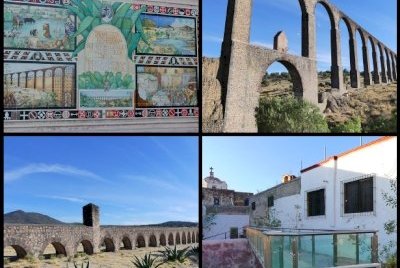
I visited this WHS in December 2021 (the aqueduct proper) and in January 2022 (Otumba and Zempoala). After a magical hot air balloon ride experience over Teotihuacan, I drove for a few kilometres on the highway to the Father Tembleque Aqueduct.
Coming from Teotihuacan it's a very easy drive and the best panoramic views are indeed from the highway. However, just when you get to about 500 metres from the aqueduct, suddenly there is no paved road, so you either park in a quiet side street or do some offroading while paying attention not damage the car if you don't have much clearance. I opted for the latter as we had our valuables in the car and slowly but surely we made it to the aqueduct. As others have said, the aqueduct is a fine construction and was vital for the local populations at the time, but it is less impressive than others in Mexico such as in Morelia, Zacatecas or Queretaro and especially others in Europe (Segovia, Pont du Gard, Evora, Pontcysyllte, etc.). It isn't large either, so I made an extra effort to walk from one end to the other, crossing the Papalote River and enjoying the ancient volcano landscape. Half way through there are also railway tracks underneath the aqueduct. Along the aqueduct there are three arcades: the first with 46 arches, the second with 13 arches, and the third with 67 arches, with the tallest arch being slightly less than 39 metres high.
In …
Keep reading 0 comments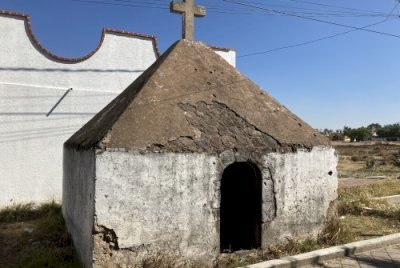
I didn’t want to come back from a visit to the Aqueduct of Padre Tembleque with the same story and the same photos as all reviewers before me. So, after digging through the nomination file and looking at the official map, it became clear to me that the two endpoints of the hydraulic system, the towns of Otumba and Zempoala, also are part of the core zone. And luckily there are buses all day long from Mexico City to Otumba. They are run by the same company that goes to Teotihuacan from Area 7 at Terminal Norte bus station. They have a cute map on their website which suggests that you can reach Zempoala with them as well.
After a drive of about 1.5 hours, the bus dropped me at the town entrance and I walked on to the central square. The first (and maybe only) eye-catcher in Otumba is the Church and Convent of the Immaculate Conception, also built under the auspices of Padre Tembleque. The church seems much too big for the town. It has a spacious plaza in front: as in many places in early colonial Mexico, services for the indigenous people were often held in the open air.
Beforehand I had looked up a few places on the map where remains of the water supply to Otumba can still be found. The most striking one is a water tank on the outskirts of town. It is located on a street named after Padre Tembleque. …
Keep reading 0 comments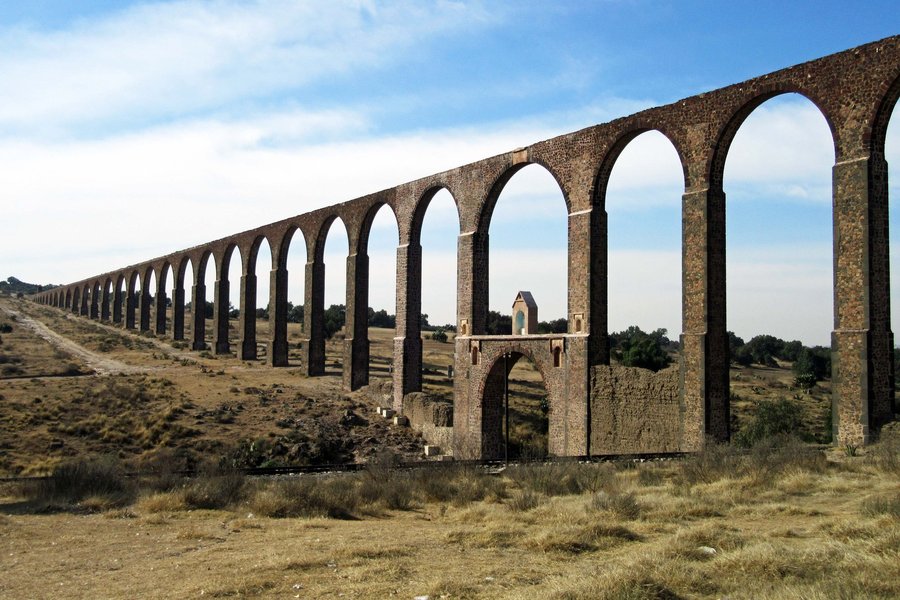
Time of visit: November 2021
Duration of visit: 1 hour
Mode of transportation: by rental car, from Queretaro en route to Puebla
Review and experience
Padre Tembleque Aqueduct is a unique WHS monument, and relatively unfrequented given it's slightly out of the way for most visitors. Rather than making a day trip from Mexico City and/or Teotihuacan, we took a slight detour en route from Queretaro (after several days in San Miguel de Allende and Guanajuato) to Puebla.
While the structure is impressive and the lack of visitors provided a quiet refuge after a lengthy and congested drive, I found the OUV of the aqueduct more limited in depth than most other WHS I have visited. Criterion (ii) is likely the most appropriate among Criteria (i), (ii) and (iv), considering it truly is an interchange of several cultural traditions, though that argument can be made for many cultural sites throughout Mexico constructed in the colonial times. I think it would have been equally if not more interesting to have featured a Mesoamerican aqueduct as a stand-alone WHS, as for example, the Aztecs built extensive water management systems, and I found featuring this aqueduct as a stand-alone site somewhat Euro-centric. All said though, the site was visually impressive and the history behind it interesting. I am also grateful for its being listed as a WHS, as otherwise it would have been very unlikely that we made a detour to visit!
Tactically, it was a little …
Keep reading 0 comments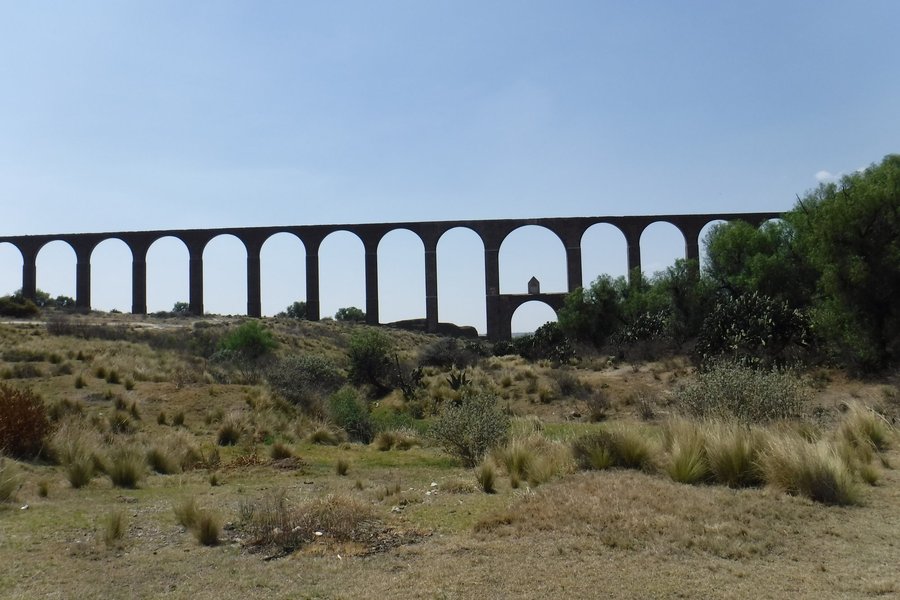
Like everyone else here, I visited this site as part of a day trip from Mexico City coupled with Teotihuacán. I solely visited the 66 (or 68 as the information board next to the arches states) arches of la Archería Monumental de Tepeyahualco. This construction is highly impressive, but it still makes a short visit. I spent about 30 minutes walking around and under the arches. There is little to do once you've reach the site other than gazing at it. As most interesting facts about its history and significance have already been mentioned by previous reviewers, I will tell you more about the journey to get there which is also part of the fun.
I reached Teotihuacán by public transport and arrived just after opening. I highly advise anyone to do the same as we were only two tourists atop the Pyramid of the Sun. With such an early start, I was done with the ruins in early afternoon. I thought it would be easy to find a taxi at such a popular site (how wrong I was!). All taxis in the parking lot were waiting for customers and could not take me in. I thus left the parking lot and then walked north from the roundabout on the road linking all entrances to the ruins. Interestingly, the sidewalk on the left side of this street is lined with interpretive panels about the World Heritage. I hailed many taxis driving by, but all refused to take me to …
Keep reading 0 comments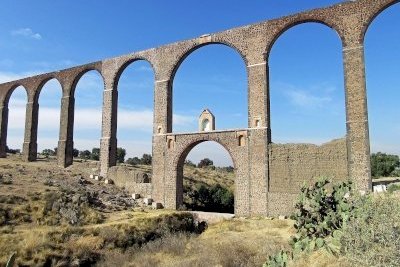
It's not that aqueducts aren't impressive, but I have much stronger memories of my conversation with my taxi driver on the way to and from the Aqueduct of Padre Tembleque Hydraulic System in January 2017 than I have of the actual aqueduct itself. After my visit, I'm still not sure exactly what it adds to the list. The Romans were constructing aqueducts with skill across Europe (see Segovia) many centuries before the technique was brought to the Western Hemisphere; I'd be more impressed with recognizing indigenous water management techniques. What constitutes the importance of this aqueduct to UNESCO, though, is the use of adobe, an adaptation of local building techniques, which enabled the construction of the picturesque span over the valley near Tepeyahualco. This main span is what draws most visitors, and it is the section I chose to visit. A sign near the parking area gave me some background about the route of the aqueduct, and a path allowed me to walk next to the tall arches. All told I didn't need much more than a half hour to visit this site; the remainder of my trip I spent in a fascinating but fretful conversation with my taxi driver, who used to live in the United States, about the future of Mexican immigration to the US after the presidential inauguration that week.
Logistics: The Aqueduct of Padre Tembleque requires private transporation, but can easily be paired with a visit to nearby Teotihuacan; I chose to hire a taxi …
Keep reading 0 comments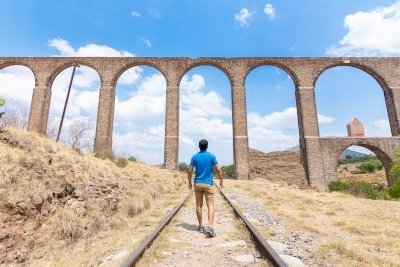
The Aqueduct of Padre Tembleque Hydraulic System wasn't really part of my original itinerary, but having hired a car I knew I was going to regret not to visit the site. Thus, I decided to combine the site with Teotihuacan on a day trip from Mexico City in April 2019. This site encompasses a water catchment area, springs, canals, distribution tanks, reservoirs and the arcaded aqueduct bridges. UNESCO recognises that the hydraulic system was an outstanding work of engineering in the Americas at the time, and a perfect example of interchange of values and influences between Europeans and Mesoamerican indigenous peoples. We only planned to visit the aqueduct bridge, simply because this was the more obvious and representative element of the site.
With the help of a GPS navigation app, we were able to get to the aqueduct from Teotihuacan in 40 minutes. The drive was smooth and there was a portion of the highway near the site where you could see the entirety of the aqueduct. I reckoned that it would be a challenge to reach this site by public transportation. A dirt road welcomed us as we approached the aqueduct. For some reason, arriving at the site made me feel like we were in an isolated, neglected area. I was kind of expecting that the government of the state of Hidalgo would put a little museum or even a ticket/guest booth after the site was inscribed, but there was none. We parked our car at the edge …
Keep reading 0 comments
Recently visited this site - before it made the list and consequently information at the site is pretty thin on the ground. The structure is quite impressive, and the length is even more so. I visited probably the most impressive bit - same picture as previous poster has put up. Getting here, as long as you have your own car is quite straightforward, and it was on our way from the coast to Teotihuacan. See this place in the evening, then night stop at Teotihuacan and then as long as it sin't a weekend get to see the pyramids all on your own at 08:00.
Hopefully now being added to the site they will do something to clean up the river passing through the valley - just needs a bit of tidying really. there were lots of locals there, picnicking and a few on horseback, not sure why they were there.
Keep reading 0 comments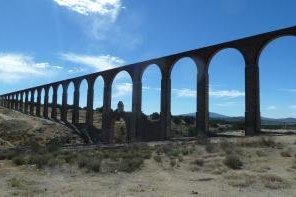
As a spectacle the aqueduct is pretty impressive but the story behind it reveals an interesting aspect of the European settlement of the Americas.
For me the most interesting thing was how early in the European settlement this piece of infrastructure was built. It was started in 1553 (only 30 years after the conquest of Tenochtitlan) as such the impressiveness is somewhat amplified by its age. It shows how European authorities attempted to shape their environment, in a way that the native groups hadn't done before. There are also traces to show how native slave labour was used in the construction as there are apparently seals highlighting the works of indigenous masons, I had a quick look but couldn't find them.
The whole structure is rather long (48km), most of it runs underground but there are three above ground arcades as they cross valleys, we visited the largest of these just outside the town of Santiago Tepeyahualco.
It is actually only about 30km from Teotihuacan, however the slow progress over cobbles in town and the lack of an eastbound access point to the highway make it a slightly longer journey than it seems on paper. Amazingly the gravel track beside the aqueduct was even fitted with two newly constructed road bumps; it was nice to see that nowhere was immune to this peculiar addiction of the Mexican road system.
A visit can be over and done with in five minutes, but the main aqueduct we visited was interesting and …
Keep reading 0 comments
Aqueduct of Padre Tembleque:
We found this quite by accident. I was amazed by the work and the enormity. It was incredile. Unfortunately, there was no one to tell us about the site and no signs. So now I am left to search the internet to explain what I saw.
Keep reading 0 comments
